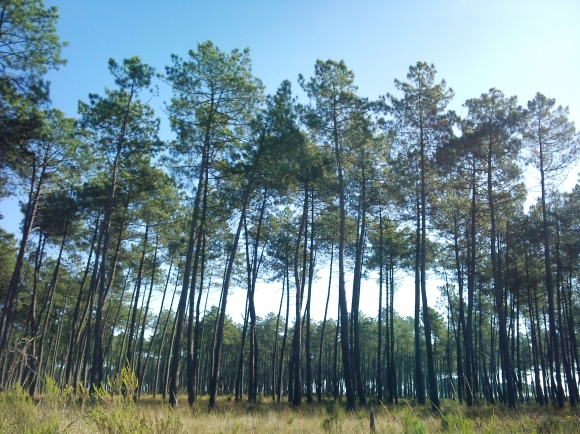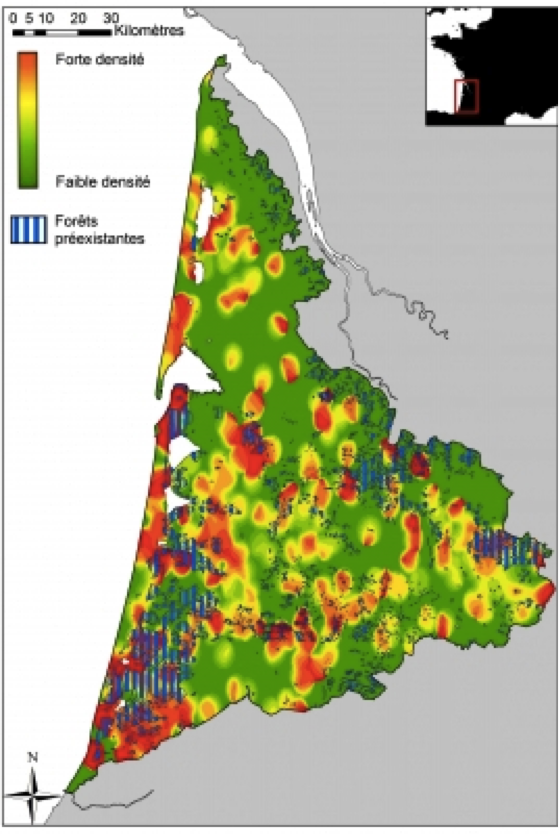Pre-existing forests as sources of pathogens? The emergence of Armillaria ostoyae in a recently planted pine forest
To meet increasing demand for wood around the world, land dedicated to forest plantations are on the rise. These new plantings, usually carried out over large areas, use a single tree species, and sometimes single tree clones. Such highly homogeneous ecosystems, from an ecological and genetic point of view, have proved to be more vulnerable and particularly susceptible to attack by a number of bio-aggressors, both endemic and introduced (bacteria, fungi, insects, nematodes, etc.). In a publication published on December 1, 2015 in Forest Ecology and Management, researchers at INRA Bordeaux-Aquitaine (UMR BIOGECO) and INRA Nancy-Lorraine (UMR EEF and IAM), in collaboration with the Ministry of Agriculture (Department of the Forest Health), describe how they used maps from the 18th century to highlight the role formerly forested areas play as sources of disease, specifically in maritime-pine plantations in the Landes forest in France planted at the end of the 19th century, the largest maritime-mine forest in Europe.
_______________________________
For more information ..
Read the INRA press release (in French)
Read the abstract on Science Direct
_______________________________




